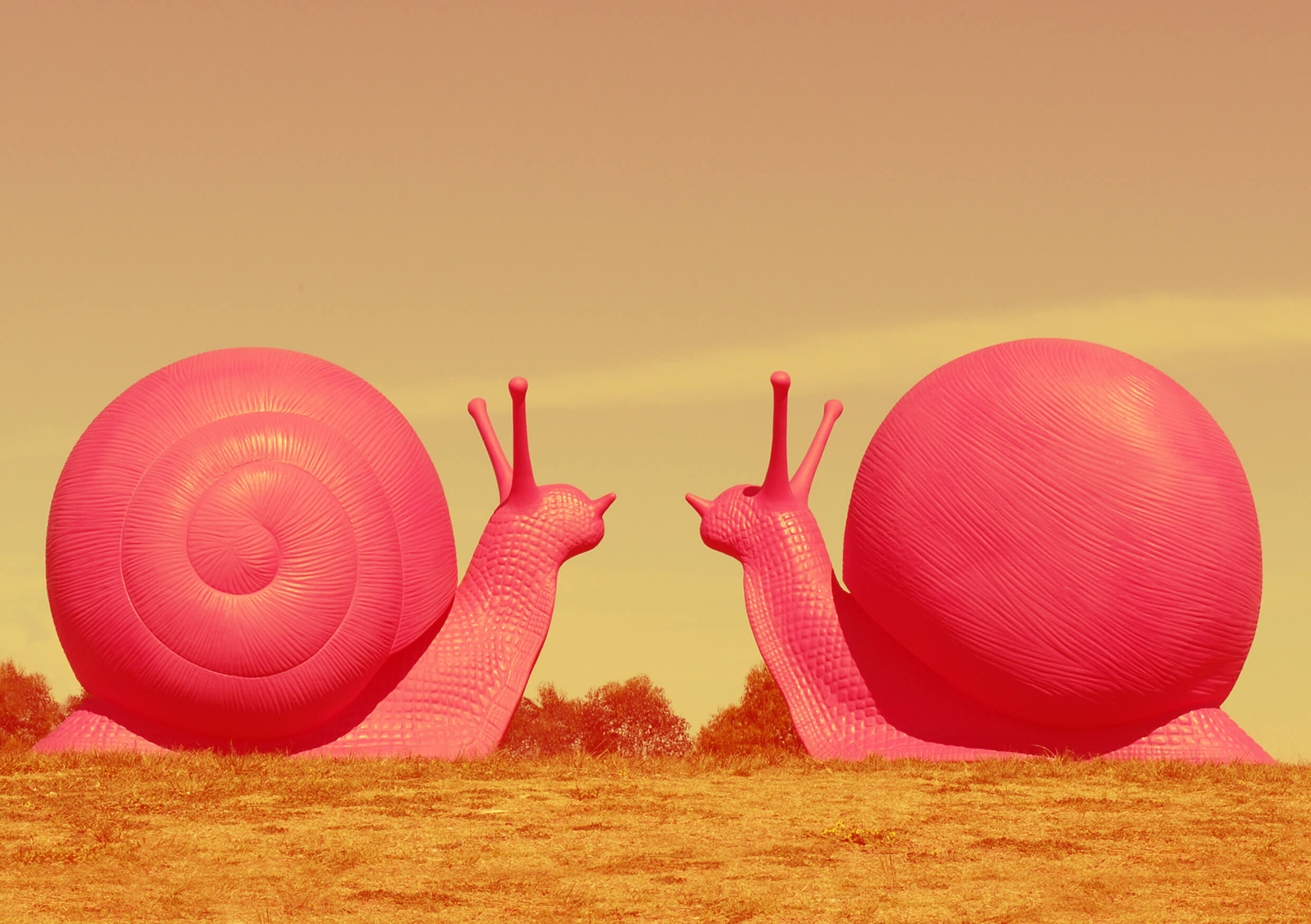Wild Rising by Cracking Art addresses global and local sustainability
By Andrew Wei
Desert Botanical Garden has some new tenants—over 1,000 of them, and in eye-popping green, white, pink and blue. Wild Rising is a bright and explosive immersive art exhibit created by Cracking Art, a collective of artists, based in Milan, who “specialize in plastic as an artistic medium with the intention of radically changing the history of art through a strong social and environmental commitment.” The plastic animal sculptures are scattered throughout the garden in 12 installations and intended to mimic the herds found in the wild, from 20 penguins posing among the cacti to 40 majestic grey wolves in the Sybil B. Harrington Cactus and Succulent Galleries. The exhibit opened in October and runs through May 2020.
Plastic Consumption
The message is clear and, well, bright: plastic consumption. The exhibit is meant to be fun and elicit various emotions, with the animals ranging in size from small and numerous to solidary and towering. But the recyclable plastic and the fun colors are meant to provoke and point at more than just an enjoyable art exhibit.
“Plastic is so ubiquitous [that] there is a feeling of being invaded,” says Elaine McGinn, the Garden’s director of events and exhibits.
The color and magnitude of some of the sculptures contribute to this slightly unsettled feeling, where the reminders of nature and its beauty are as obvious as the implications of the plastic behind it.
The artists, says McGinn, created the plastic reminders because they saw a society completely immersed in plastic and their artificial world, and they wanted to create a piece that interacted between the natural and artificial world. What they made in response was a constantly evolving plastic exhibit that used some of this artificial world for “something a little more positive.”
Diverting Plastic From the Ocean
The exhibit serves as a reminder of the lessons of nature and the beauty of the world we live in, and the amount of plastic that is being dumped into it, says McGinn.
“One day there will be more plastic in the ocean than fish,” she says.
With consciousness and sustainability in mind, McGinn hopes viewers will take away meaning from the exhibit. Beyond even the lessons in nature it communicates, as in with the meerkat exhibit showing the benefit of community and living collaboratively, there are “little steps [we] can do to help make a difference.”
Cutting the habit of disposable plastics like water bottles and shopping bags is an easy first, says McGinn, who takes things a step further with her own compost and mulching in her garden and using local whenever possible to cut down on industrial environmental costs.
Wild Rising Exhibit
Cutting out plastic completely from our modern lives probably won’t happen in our lifetime, but what the Wild Rising exhibit hopes to remind people is that we don’t have to use as much as we do. In a concession towards this fact, the sculptures are made of a fully recyclable plastic that is not already recycled. This is because eventually, the sculptures will be melted down and used to make new ones for another installation in a different environment, to serve as a reminder for others to consume plastic reasonably and responsibly.
Wild Rising by Cracking Art is located at Desert Botanical Garden, 1201 N. Galvin Pkwy., Phoenix; 480.941.1225;
www.dbg.org. The exhibit is free with general Garden admission.
Andrew Wei is a soon-to-graduate senior at the Walter Cronkite School of Journalism and Mass Communication, with a secondary major in political science and a focused look at democracy and international politics. He is passionate about sustainability and reform to help restore our Earth to some of its former natural glory. Wei juggles his time between Arizona State, Green Living Magazine
and working as a solar consultant when he is not hanging out with friends.






